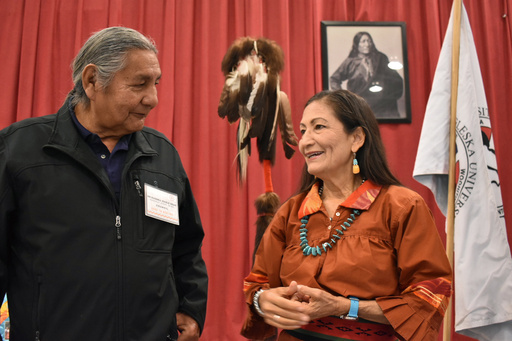
BILLINGS, Mont. — The White House has announced that President Joe Biden will deliver a formal apology on behalf of the U.S. government this Friday. This apology pertains to a longstanding initiative that aimed to dismantle Native American culture, language, and identity through the enforcement of Indian boarding schools, a practice that persisted for 150 years.
During this historically significant moment, Biden is expected to recognize the federal government’s involvement in this egregious system during his visit to the Gila River Indian Community close to Phoenix, underscoring the tragic outcomes which have resulted in the deaths of over 900 children in these government-supported establishments. Although these institutions have since closed, their detrimental legacy continues to affect Native communities today, where survivors often grapple with deep generational trauma stemming from the abuse they suffered.
The initiative to establish a nationwide boarding school system for Native Americans took root in 1819, during the presidency of James Monroe, with the enactment of the Indian Civilization Act. This legislation claimed to aid in maintaining Native tribes by instilling “civilized” habits and arts but ultimately aimed to erase the Native families and cut the generational ties that perpetuated their cultural identities, despite the enforced relocation onto reservations.
Over the following century and a half, at least 417 such schools were operational across 37 states, funded primarily by taxpayer money. Staff members at these institutions worked diligently to eradicate Native traditions, often resorting to drastic measures such as cutting their hair, prohibiting the use of Native languages, and imposing manual labor. By the 1920s, the system saw as many as 60,000 Indigenous children enrolled in boarding schools, whether managed by the federal government or religious organizations, according to insights from the National Native American Boarding School Healing Coalition.
Predominantly, the schools were located in states populated significantly by Native communities, including Oklahoma, Alaska, Arizona, New Mexico, Minnesota, and the Dakotas. Students, some as young as four, were frequently sent to institutions far from their homes. The last boarding school was established in 1969, the same year a Senate report labeled this system a national tragedy, highlighting its severe underfunding, academic shortcomings, and a predominant focus on discipline and punishment.
The policy of forced assimilation was ultimately renounced with the passage of the Indian Child Welfare Act in 1978, though a comprehensive investigation into the boarding school system had not taken place until the Biden administration. In 2021, Interior Secretary Deb Haaland, the nation’s first Native American Cabinet secretary and a member of Laguna Pueblo in New Mexico, initiated a nationwide reevaluation of these historical abuses.
Over two years, Haaland and other Interior officials conducted listening sessions across various reservations, allowing survivors and their family members to share their harrowing experiences. Former students reported abusive and often degrading treatment from school staff while being separated from their families, while descendants conveyed the ongoing generational traumas that have manifested as fractured relationships and substance abuse issues on reservations.
Haaland, deeply personally connected as her grandparents were subjected to the boarding school experience, stated, “Make no mistake: This was a concerted attempt to eradicate the quote, ‘Indian problem’ — to either assimilate or destroy Native peoples altogether.” Following the agency’s investigation, a key recommendation was to provide a formal apology from the government.
Investigations revealed that at least 973 Native American children died within the boarding system. This figure includes approximately 187 children from the Carlisle Indian Industrial School in Pennsylvania, which now houses the U.S. Army War College. Continual efforts are being made for the repatriation of remains, with three children disinterred last month and returned to the Fort Belknap Indian Reservation in Montana.
The inquiry by the Interior Department uncovered marked and unmarked graves at 65 different boarding schools, identifying causes of death that included disease and abuse. Reports suggested that more children may have succumbed to illness away from the campuses after returning home when unwell.
The boarding school initiative, alongside similar assimilation programs, received a substantial total of $23.3 billion in federal funding adjusted for inflation. Many of these schools operated in partnership with religious and private institutions that also received federal support as part of this assimilation endeavor. Out of the schools backed by the government, over 200 had religious affiliations, while the boarding school coalition has identified more than 100 additional religiously operated institutions lacking any evidence of federal assistance. Recently, U.S. Catholic bishops issued an apology for the church’s role in the traumas experienced by the children.
